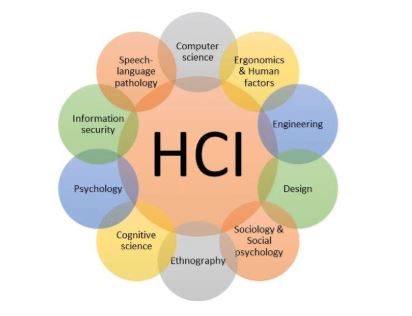Human Computer Interaction (HCI) is the study of interaction between people (users) and computing devices. HCI is an interdisciplinary field, because to design user interfaces we must understand the user, so we need Behavioral Sciences, Cognitive Psychology, Cognitive Science involved with Computer Science.
In HCI, computer scientists, engineers, psychologists, social scientists and design professionals play important roles.
We teach HCI in SLIIT for undergraduates. In this module we discuss about:
- Overview of HCI and UX
- Design Mindset
- Need finding and user research techniques
- Design Principles standard and best practices
- Usability evaluation
- Usability evaluation
- Getting ready for industry
- Future Directions of HCI
- Create usable software – enabled products and user-interfaces
- Enhance the usability of existing products
- Identify problems and tasks (such as in the workplace) that can be addressed with software products.
